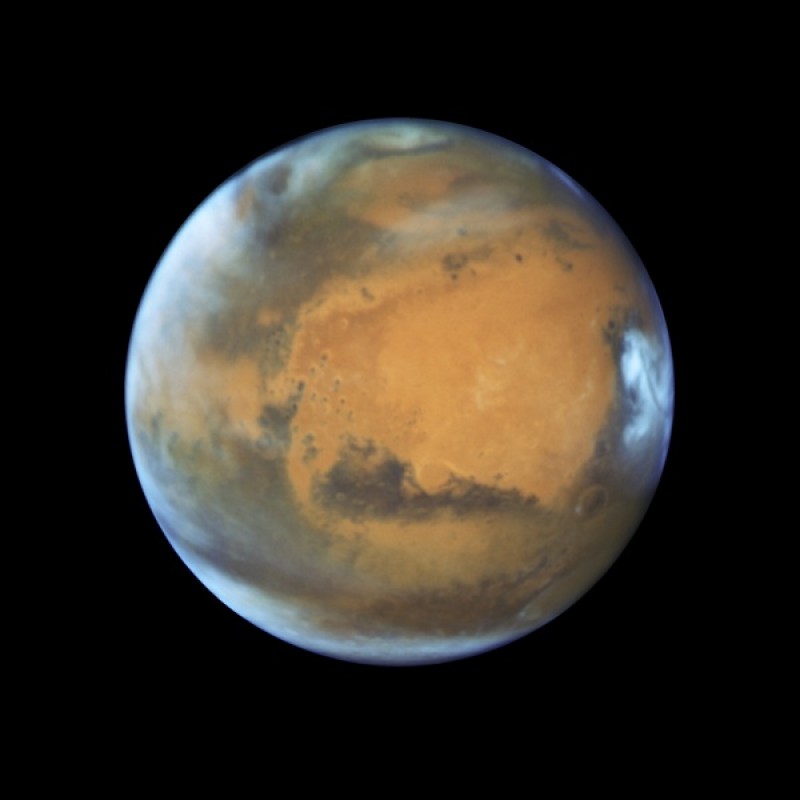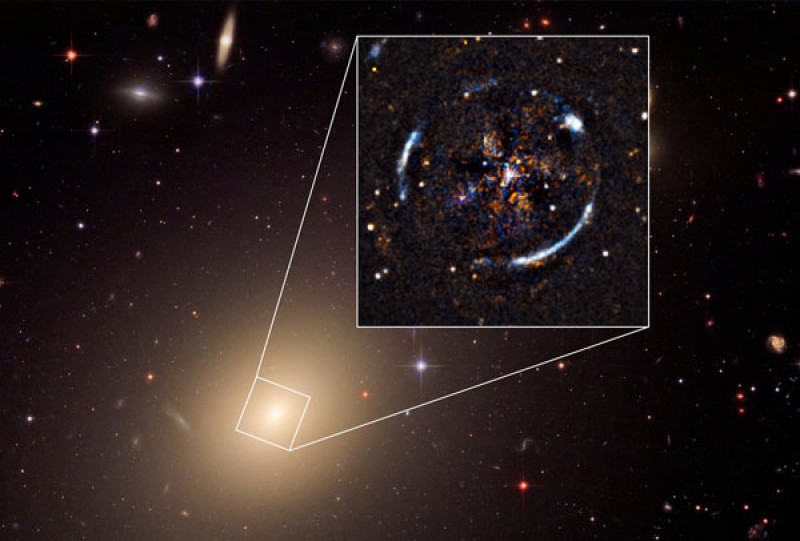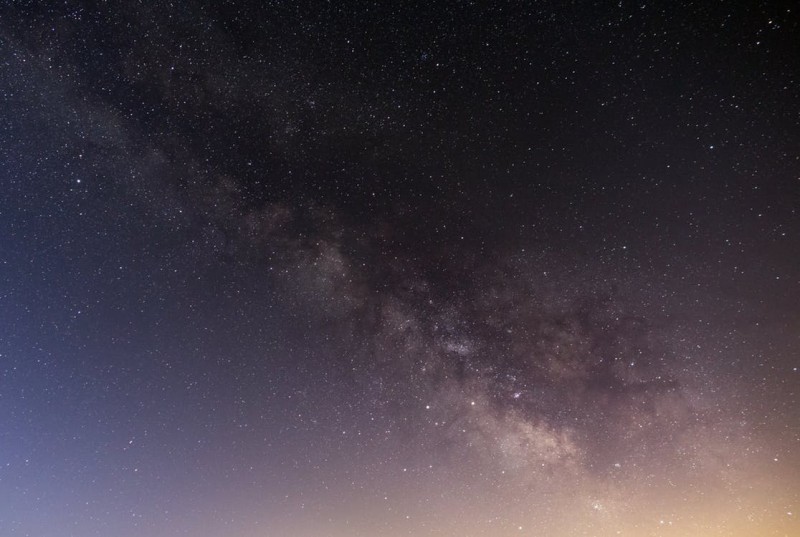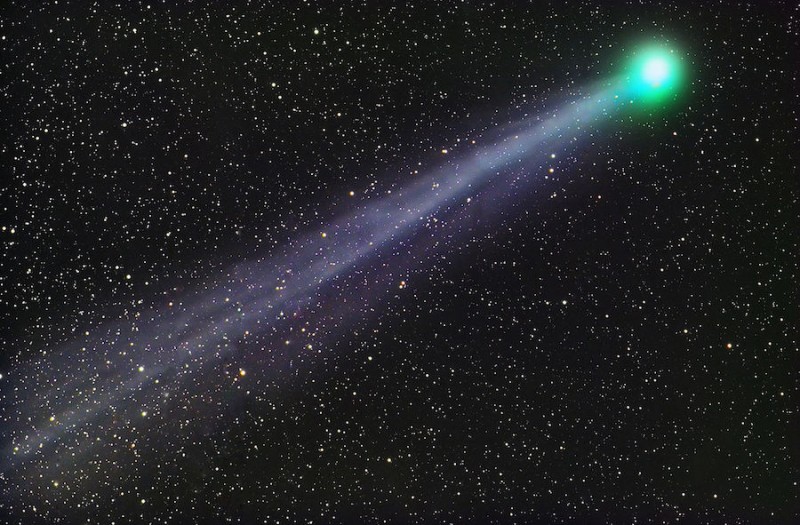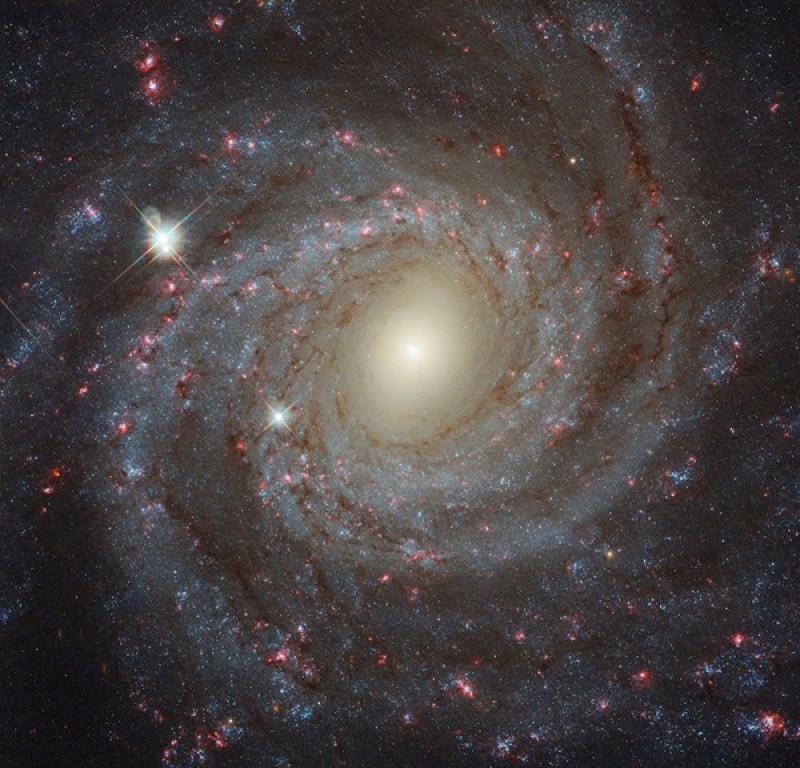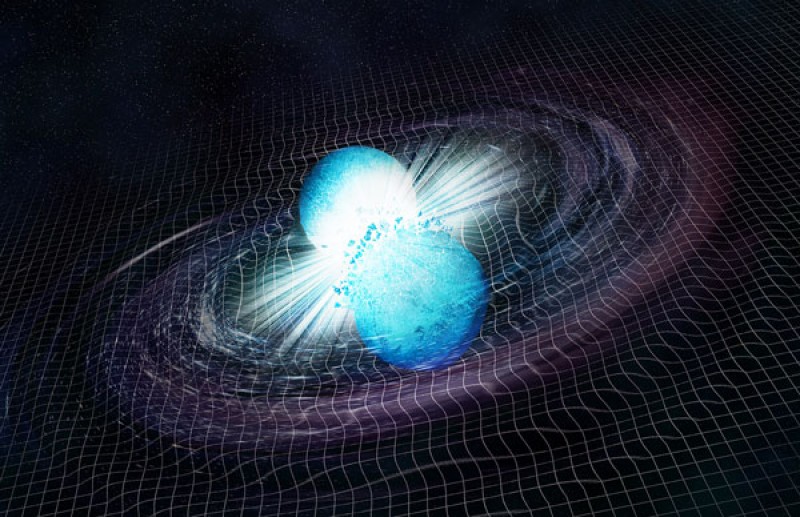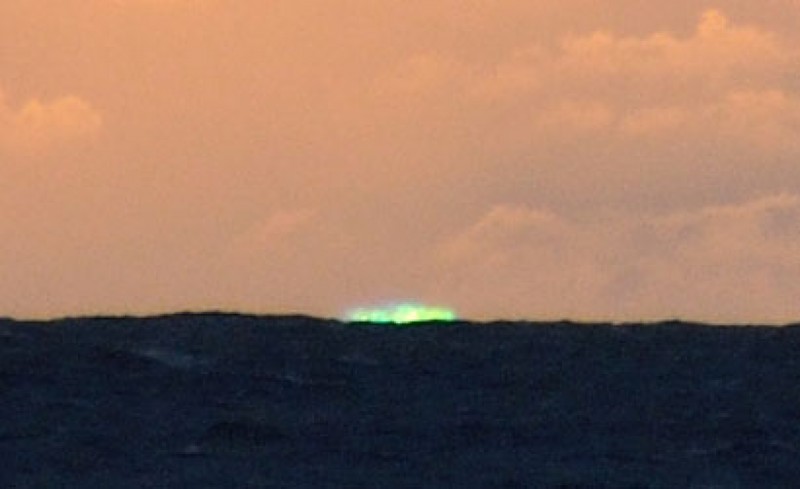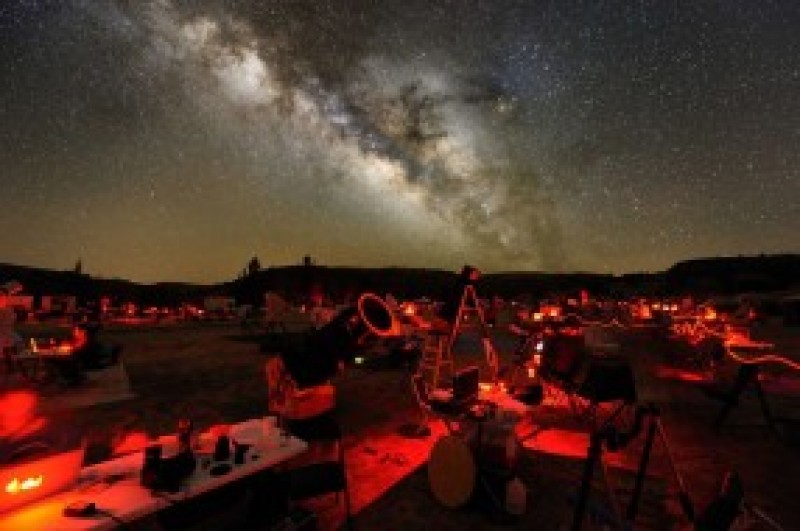Blog
The sky for the first week of July
Tuesday, July 3rd 2018 05:25 PM
Tuesday, July 3
If ever there was a good time to track down Pluto, this is the night. The distant world appears a mere 3.5" west of the 6th-magnitude star 50 Sagittarii in northeastern Sagittarius, making the task of finding the dwarf planet much easier than usual. Pluto glows dimly at 14th magnitude, however, so you’ll need an 8-inch or larger telescope to spot it visually.
Wednesday, July 4
No holiday better epitomizes summer in the United States than Independence Day. And the season’s namesake asterism — the Summer Triangle — will be on prominent display as fireworks ring out across the land. The trio’s brightest member, Vega in the constellation Lyra the Harp, stands nearly overhead in late evening. The asterism’s second-brightest star, Altair in Aquila the Eagle, then lies about halfway from the southeastern horizon to the zenith. Deneb, the luminary of Cygnus the Swan, marks the Summer Triangle’s third corner. Although it is this...
Read More
Read More
ESA releases complete Rosetta archive, including a final surprise
Friday, June 29th 2018 04:16 PM
The European Space Agency has released a complete archive of imagery and data from the historic Rosetta mission, allowing armchair astronauts to relive the spacecraft’s thrilling final descent to the surface of comet 67P/Churyumov-Gerasimenko and the challenging search for the wayward Philae lander. It even includes a reconstructed final frame that wasn’t initially recognized as an image.
The final set of high-resolution images from the OSIRIS camera covers the period between July 2016 and end of mission on 30 September that years, pushing the total number of wide- and narrow-angle images to nearly 100,000 over the mission’s 12-year voyage.
“The final set of images supplements the rich treasure chest of data that the scientific community are already delving into in order to really understand this comet from all perspectives,” said Matt Taylor, ESA’s Rosetta project scientist. “There are certainly plenty of mysteries, and plenty still to dis...
Read More
Read More
The Red Planet's Revival
Friday, June 29th 2018 04:07 PM
July features the finest views of Mars in 15 years. But that’s just one highlight in a month full of them. The five planets known since antiquity span the evening sky: Mercury and Venus appear in twilight, Jupiter and Saturn remain visible until after midnight, and Mars is a showpiece all night.
As if to underscore the Red Planet’s peak, a total eclipse of the Moon visible from most of the Eastern Hemisphere occurs near Mars on the night of July 27/28. Binoculars will show Uranus and Neptune as they climb high before dawn, and a telescope reveals Pluto sliding past a bright star. It’s a great month to watch the night sky, so let’s get started.
Evening twilight hosts both Mercury and Venus. Mercury crosses from Cancer into Leo this month, passing within 1° of the Beehive star cluster (M44) July 3 and 4. The innermost planet glows at magnitude 0.0 and should be easy to spot with your naked eye, though you’ll need binoculars and a tr...
Read More
Read More
Best Test of General Relativity on Galaxy Scales
Tuesday, June 26th 2018 04:25 PM
General relativity — which describes our modern understanding of gravity as the curvature that mass induces on spacetime — has been extensively tested in our solar system. It has passed every one of these tests with flying colors.
But fewer tests exist on scales of thousands or millions of light-years. It is precisely these scales that are relevant to theories of modified gravity, which provide an alternative to the existence of dark matter. They predict that gravity behaves differently over far distances than it does in our solar system. While some tests on galactic scales have been conducted, they haven’t been robust enough to rule out modified gravity.
Now, a study led by Thomas Collett (University of Portsmouth, UK) in the June 22nd Science (preprint available here) has provided such a test using Hubble Space Telescope and Very Large Telescope observations of a lensed galaxy. The light from a star-forming galaxy in a universe just 3 billion years...
Read More
Read More
Get ready for Galactic Tick Day!
Monday, June 25th 2018 06:43 PM
When you think about the solar system, chances are you picture the planets orbiting the Sun. But that’s only part of the story — our solar system, including the Sun, is also orbiting the center of the Milky Way, the galaxy in which we reside. While a single orbit of Earth around the Sun takes a mere 365 days, a single orbit of the Sun (and the rest of our solar system, along with it) around the Milky Way takes nearly 230 million years.
It is that journey — the trip our planet, our star, and our entire solar system take together — that is the starting point for Galactic Tick Day: a new holiday that will be celebrated for the second — and the two-hundred-and-thirty-sixth — time June 26, 2018.
The story of Galactic Tick Day
According to David Sneider, one of the holiday’s creators, “[Galactic Tick Day] started out as a fun and quirky idea that actually has some pretty interesting ramifications.”
The holiday is celebrated eve...
Read More
Read More
The sky this week for June 22 to July 1
Saturday, June 23rd 2018 04:42 PM
Friday, June 22This week offers a good opportunity for binocular users to track down the northern sky’s brightest globular cluster. M5, whose 100,000 stars glow at a combined magnitude of 5.7, lies in the southwestern corner of the constellation Serpens the Serpent. You can locate it just 0.4° north-northwest of the 5th-magnitude star 5 Serpentis. Binoculars show the cluster as a hazy ball of light punctuated by a bright core.Saturday, June 23The waxing gibbous Moon passes near Jupiter tonight. From North America, the two were closest this afternoon (when they were below the horizon), though they remain within 5° of each other after darkness falls. Despite Luna’s brilliance dominating the scene, you should have little trouble picking out the magnitude –2.4 planet to its lower right. The best time to observe Jupiter through a telescope is when the Moon doesn’t lie so close. This week, the gas giant spans 42" and displays a wealth of detail in its cloud...
Read More
Read More
Einstein Proven Right Even In Other Galaxies 4K Einstein Proven Right Even In Other Galaxies
Friday, June 22nd 2018 08:25 PM
Albert Einstein’s name is synonymous with intelligence, but he’s more than earned his rep. The man revolutionized physics when he was in his 20s and 30s. He came up with a whole new way of understanding reality, not as a fixed grid against which events occur, but as fundamentally intertwined with time and perception. Trying to prove Einstein wrong, somehow, is a perennial goal of budding and experienced physicists alike.Well, they’ll have to keep trying. A new study in Science today shows that Einstein was so good, even in distant galaxies he’s still right.
Warp Zone
It all has to do with general relativity, Einstein’s theory of gravity, which posits that anything with mass warps the fabric of spacetime. The bigger the mass, the more the very universe deforms around it. This explains why massive objects attract less massive objects: they’re just following spacetime’s curves. Light also follows...
Read More
Read More
The Aftermath of GW170817: Neutron Star or Black Hole?
Thursday, June 21st 2018 04:15 PM
Artist’s illustration of the merger of two neutron stars. A new study suggests that the neutron-star merger detected in August 2017 might have produced a black hole. NASA/CXC/M.Weiss
A Fuzzy Division
Artist’s illustration of the black hole that resulted from GW170817. Some of the material accreting onto the black hole is flung out in a tightly collimated jet. NASA/CXC/M.Weiss
Based on gravitational-wave observations, we know that two neutron stars of about 1.48 and 1.26 solar masses merged in GW170817. But the result — an object of ~2.7 solar masses — doesn’t have a definitive identity; the remnant formed in the merger is either the most massive neutron star known or the least massive black hole known.
The theoretical mass division between neutron stars and black holes is fuzzy, depending strongly on what model you use to describe the physics of these objects. Observations fall short as well: the most massive neutron star...
Read More
Read More
Quest for the Green Flash
Thursday, June 21st 2018 04:13 PM
Some sky phenomena are fairly common but rarely noticed because of their supposed difficulty or appearance at odd hours. Like the planet Mercury: Once you know when and where to look, it’s easy to find it at dusk or dawn multiple times each year.
I've found the same is true for the green flash, a brief but colorful atmospheric phenomenon that occurs at the moment of sunrise and sunset. For a second or two, the Sun’s upper rim can appear intensely green. Although called a “flash,” it's more a vividly green coloration to the first or last blip of the Sun visible at the horizon.
A friend of mine saw the flash for the first time while watching a sunset along the north shore of Lake Superior. He wasn’t even looking for it, but when it was over a second later, he turned to his paddling partner and asked “Did we just see the green flash?” Yes, they did! My first sighting was through a camera viewfinder, and I was equally surprised.
A mi...
Read More
Read More
Summer Star Party Season Is Here!
Wednesday, June 20th 2018 04:48 PM
Texas Star Party, upper field.Ron Ronhaar and Todd Hargis
I moved to New England from Florida last August. Even if everybody warned me about Massachusetts winters — and even if I’ve lived in northern climes in the past — nothing quite prepared me for the nor’easters slingshotting one after the other into Cambridge, dumping more snow in one go than I’ve ever seen in a 24-hour period. (And I’ve lived in Finland.)
But just as surely as night follows day, so does summer follow winter (at least one hopes). As I breathe a sigh of relief, and revel in the fact that I can now get out on really clear nights and leave the house without piling on clothes, I still think to myself, wouldn’t it be nice if I could spend even more time looking at objects in the sky? And then I realize I can! I can go to a summer star party! They’re held all across the continent throughout the summer season.
What’s required to attend a star party? W...
Read More
Read More


